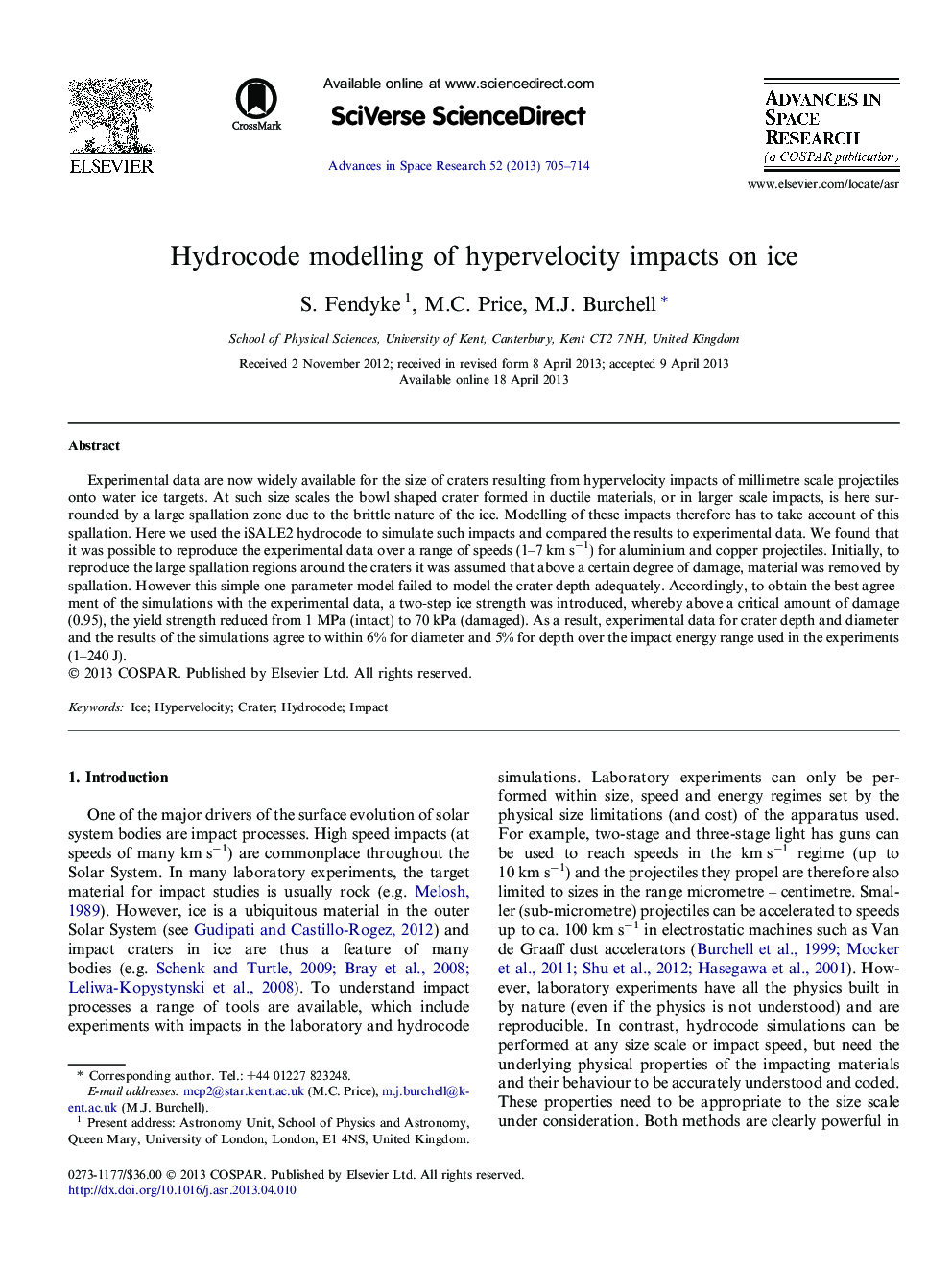| Article ID | Journal | Published Year | Pages | File Type |
|---|---|---|---|---|
| 10694367 | Advances in Space Research | 2013 | 10 Pages |
Abstract
Experimental data are now widely available for the size of craters resulting from hypervelocity impacts of millimetre scale projectiles onto water ice targets. At such size scales the bowl shaped crater formed in ductile materials, or in larger scale impacts, is here surrounded by a large spallation zone due to the brittle nature of the ice. Modelling of these impacts therefore has to take account of this spallation. Here we used the iSALE2 hydrocode to simulate such impacts and compared the results to experimental data. We found that it was possible to reproduce the experimental data over a range of speeds (1-7 km sâ1) for aluminium and copper projectiles. Initially, to reproduce the large spallation regions around the craters it was assumed that above a certain degree of damage, material was removed by spallation. However this simple one-parameter model failed to model the crater depth adequately. Accordingly, to obtain the best agreement of the simulations with the experimental data, a two-step ice strength was introduced, whereby above a critical amount of damage (0.95), the yield strength reduced from 1 MPa (intact) to 70 kPa (damaged). As a result, experimental data for crater depth and diameter and the results of the simulations agree to within 6% for diameter and 5% for depth over the impact energy range used in the experiments (1-240 J).
Related Topics
Physical Sciences and Engineering
Earth and Planetary Sciences
Space and Planetary Science
Authors
S. Fendyke, M.C. Price, M.J. Burchell,
